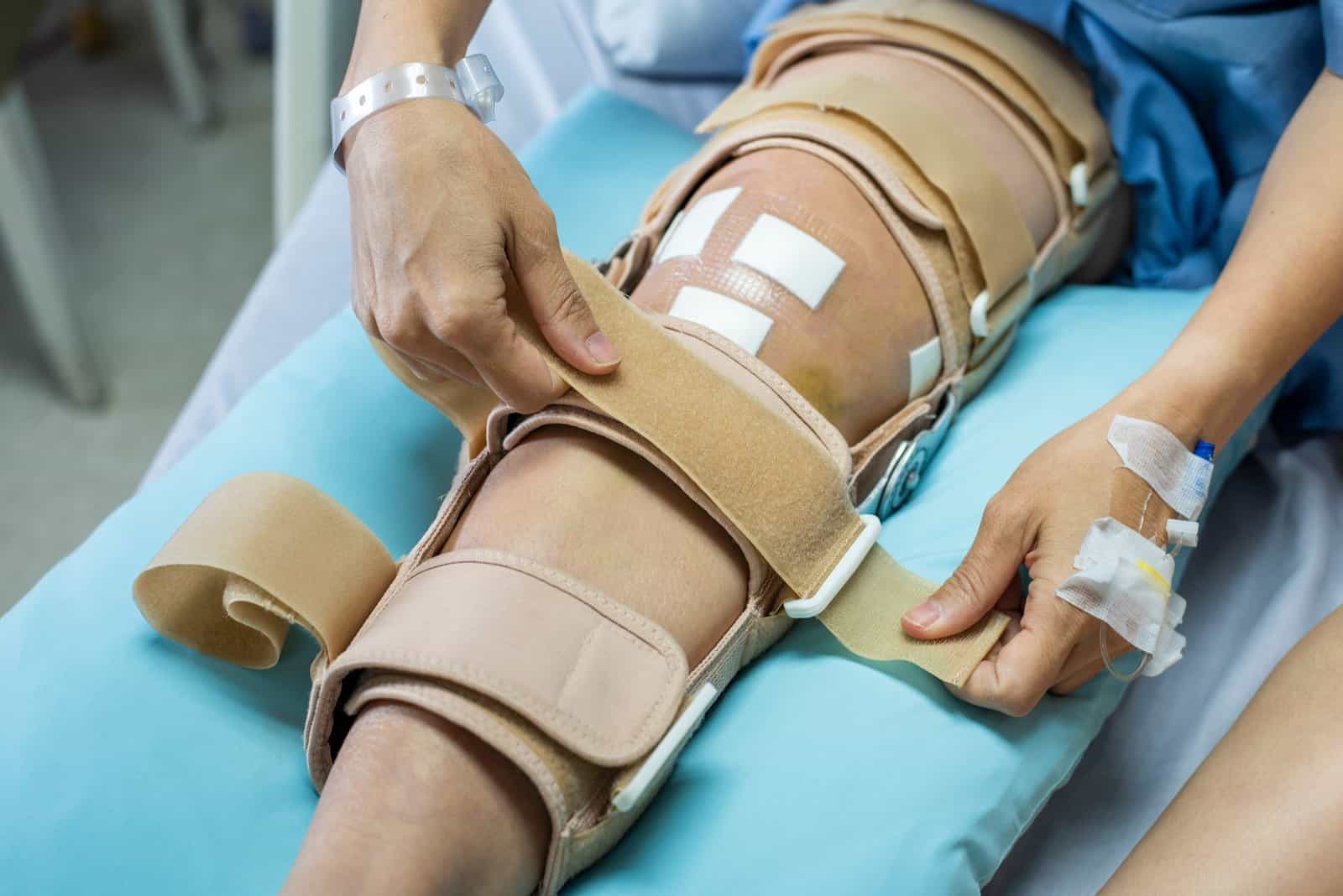Why We Suffer And How We Cope
Pain management practice is devoted to the relief of pain and the improvement of function for patients living with pain (Kloth, Trescot, Riegler, 2011).
But, it seems pain experiences can range from challenging, but tolerable and manageable–to catastrophic and deadly.
A woman with a ten-year history of an orthopedic injury and related nerve illnesses experiences despair from throbbing, chronic pain. Her days are limited to few-to-no activities. She seldom answers her ringing phone. A small pet appears to be her only companion. At the end of a particularly torturous day, she pours a glass of wine and takes a prescribed pain medication. It is likely she swallows a second tablet and perhaps, a third. She falls into a sound sleep. Her pain is gone. Forever. (Personal Contact, this writer, 2011).
It is fortunate this desperate and shocking description is not universal. An injured military veteran (Veteran’s Administration, Long Beach, CA., 2018), describes daily back pain, originating from a military plane crash. After years of masking his pain with alcohol, he seeks treatment from a Veteran’s Hospital pain management program. He credits the program with establishing and encouraging renewed family interaction. The support of other veterans with similar pain experiences seems to have helped him continually survive and find moments of enjoyment in his life.
Suffering from illness and injuries is not unique. There are explanations for continuing or relieving chronic pain. These include theories about neurotransmitters; related depression and anxiety; Gate Theory; appropriate medications; and the need for pain education and emotional support, to include pain management programs.
Who Suffers and Why
Chronic pain, compared to acute pain, is defined as pain that continues three months or longer and does not respond readily to traditional methods (Contra Costa County, CA., Health Services, 1998). Patients frequently have extensive histories of continuous pain before seeking pain management services.
Nearly 50 million American adults have significant chronic pain, according to a study prepared by the National Institute of Health’s National Center for Complementary and Integrative Health (2012), which appears in the Journal of Pain (2015), published by the American Pain Society. The NHIS study estimates that within a previous three month period, 25 million United States adults had daily chronic pain and 23 million more reported severe pain.
There were associations between pain severity and ethnicity, language preference, gender, and age. Women, older individuals, and non-Hispanics were more likely to report any pain, but Asians less likely. Richard L. Nabin, Ph.D., a lead epidemiologist for NCCIH, states that, “The experience of pain is subjective. There are various responses to pain, even in those with similar levels of pain.”
Gate Control Theory of Pain
The Gate Control Theory of Pain, proposed in 1965 by Ronald Melzack and Patrick Wall (Wikipedia, 2018), accounts for the physical and psychological aspects of pain perception.
The Gate Control Theory asserts that non-painful input closes the gates to painful input, which prevents pain sensation from traveling to the central nervous system. Stimulation by non-noxious input is able to suppress pain. Pain seems to be lessened when the area is rubbed, inhibiting the firing of fibers. An example is the use of TENS (transcutaneous electrical nerve stimulation), where fibers are selectively stimulated with electrodes to produce this effort, and pain is lesser.
The brain can control the degree of pain that is perceived, based on which stimuli are to be ignored to pursue potential gains. The brain determines which stimuli are profitable to ignore over time. The brain can directly control the perception of pain.
Contra Costa County Pain Management Program educational material (1998) has explained what “opens the gate” and increases the pain sensation. This includes extent of illness or injury; the readiness of the nervous system to send pain signals; emotional stress; and one’s focus on the pain. Factors that “close the gate” include physical (heat, massage, appropriate activity level); emotional (relaxation, optimism); and mental (life involvement, distraction, and change in attitude).
Neurotransmitters
Neurotransmitters are chemicals that enable nerve transmission signals from one nerve cell to another neuron, muscle cell, or gland cell (Wikipedia, 2018). Imbalances in neurotransmitter systems have been associated with diseases and mental disorders. Chronic physical or emotional stress can be a contributor to neurotransmitter system changes.
The noradrenaline (norepinephrine) system is involved in the perception of pain, anxiety, and negative emotional memory. The Serotonin system is a factor in emotion, mood, and sensory perception. Drugs targeting the major neurotransmitter systems affect the whole system. An example is the medication Fluoxetine (Prozac), a selective serotonin re-uptake inhibitor, which increases the amount of serotonin present for a positive neurological result.
A number of researchers/authors have documented the relationship between neurotransmitters and pain.
Sanesco Health (2016) writes that a low level of serotonin can be partially responsible for pain severity. Serotonin function is found to be decreased with the nerve illness, fibromyalgia. Other neurotransmitters that may be involved in pain perception are GABA and dopamine. GABA may decrease perception of pain. Dopamine may help to relieve pain.
BMJ (2015) publishes that neurotransmitters are linked to depression, chronic fatigue, and chronic pain symptoms. Physician Mirza, in BMJ, has stated that serotonin plays a major role in modulating pain perception. This physician adds that serotonin-enhancing medications are used in the treatment of migraines. Combined serotonin-norepinephrine uptake inhibitors have been used in chronic pain management.
Healthline (2018) has written that serotonin is synthesized from tryptophan. Tryptophan depletion is seen in those with depression and anxiety. These editors, with a natural approach, note that foods that increase serotonin include eggs, cheese, pineapple, tofu, salmon, nuts and seeds, and turkey (stuffed with tryptophan). Serotonin isn’t found in foods, but tryptophan is.
Hall-Flavin (2018) notes that pain and depression are related. Pain worsens symptoms, and depression worsens feelings of pain. Depression can cause physical symptoms, such as back pain or headaches. Chronic pain can lead to decreased sleep, stress intolerance, and work, legal, and financial issues. Hall-Flavin recommends antidepressants, which chemically relieve both pain and depression.
Harvard Health Publishing (2018) has written that the overlap of anxiety, depression, and pain is evident in syndromes such as fibromyalgia, irritable bowel syndrome, headaches, and nerve-related pain. This publisher has recommended antidepressant serotonin and norepinephrine re-uptake inhibitors (SNRI’s, such as Cymbalta); or tricyclic antidepressants (TCA’s, such as Pamelor), as both types can treat psychiatric disorders and pain.
Harvard has also recommended anticonvulsants, which constrain electrical activity and hyper-responsiveness in the brain. An example of an anticonvulsant is Neurontin.
Traditional Pain Medications
Mayo Clinic (2018) has emphasized the need for medication safety. They have written of the risks of traditional pain medications (opioids). Mayo has indicated that NSAID’s (non-steroidal anti-inflammatory drugs, such as Motrin), are effective for pain with inflammation. Acetaminophen (such as Tylenol), doesn’t target inflammation but does assist with pain, making it less effective than NSAID’s.
Author Smith (2018) in discussing depression and opioid abuse, has estimated that over 2 million people in the United States abuse prescription painkillers. Half a million suffer from heroin abuse. Suffering from medication abuse can increase depression—and depression can increase medication abuse. Depression may stem from how opioids cause changes in the brain’s reward system, as well as hormone changes.
Dineen & Dubois (2016) have indicated that opioids are an important tool for physicians in treating pain. Relief from suffering is a primary obligation of physicians. But, patients can develop opioid-use disorders from prescriptions to treat pain. Other patients have died from non-medical use of prescription opioids, often combined with other drugs and alcohol.
Physicians are understandably conflicted about how, when, and whether to prescribe opioids. According to Dineen & Dubois, physicians have responsibility for careful and conscientious prescribing, which includes patient assessment, communication, and education.
Pain Management Rehabilitation
This writer and occupational therapist helped develop a pain management clinic outpatient practice for a county system (Contra County Health Services, 1998).
With a pain management physician, clinical psychologist, physical therapist, and occupational therapist, goals of treatment were to increase physical exercise, ability to cope with stress, and gain education in pain management techniques. The six-week program was scheduled two afternoons weekly, and the program offered both individual and group sessions.
Clients were encouraged to actively participate in the two-day weekly sessions. Pain was not a reason for non-attendance. The program physician carefully prescribed pain-reducing medications and encouraged clients to regularly discuss pain concerns during physician visits and during pain management sessions. Clients demonstrated decreased visits to county emergency services with pain-related urgent concerns.
Each afternoon session began with a one-hour group therapy session, which included education and handouts regarding pain theories. Clients were encouraged to discuss both positive and negative events since the previous session with the treatment team: psychologist, physical therapist, and occupational therapist.
Typical group conversations included the stressors of chronic pain and its impact on individual and family relationships. Many of the clients shared past experiences of abusive relationships. Pain education handouts included: Gate Theory, specific illness details (such as arthritis, fibromyalgia, back pain), and stress reduction (such as breathing relaxation exercises).
Clients were asked to keep a daily activity log to better understand what times and activities tend to increase pain. Additionally, clients were educated regarding assertive, rather than passive or aggressive communication, to increase confidence in relationships. Cognitive therapy was included to decrease the often negative manner in which clients view themselves and life situations. Healthy eating and dietary recommendations were discussed. Clients participated in developing therapy/emotional goals, functional/occupational therapy goals, and exercise/physical therapy goals.
The program’s physical therapist educated clients in the benefits of exercise, to include decreased pain and stiffness, weight control, and increased muscle tone. This therapist led individual and group exercise sessions, monitoring for safety, health, and status of blood pressure/other vital signs.
This writer and occupational therapist helped clients understand the concept of pacing self, to avoid over-doing activities that increase pain. Sessions on energy conservation (such as rest breaks, use of needed adaptive equipment, and wise home arrangement/avoidance of reach- to- high-levels) were included. Effective body mechanics were practiced, such as safe, healthy methods to lift objects and perform housework. Occupational therapy also conducted a group session with stress management handouts and ended the afternoon with soft music relaxation.
At the end of the six week program, the need for socialization was emphasized with a review of the program — and a delicious luncheon.
The Veteran’s Administration, Long Beach, CA. (2018) gives special attention to veterans experiencing chronic pain. They recognize illness and injuries that contribute to chronic pain and give attention to prior military service injuries (such as past amputations).
The Veteran’s Administration also offers physical therapy; psycho-social occupational therapy; counseling for pain management; and the physicians prescribe, educate, and monitor advanced medications to reduce severe pain. Additional services include encouraging frequent communication regarding chronic pain with other veterans and physicians, and the engagement in physical activity, as able.
The Cleveland Clinic (2017) notes that 30 – 50% of people struggling with chronic pain also experience depression and/or anxiety. They offer pain management services. The Clinic, like other pain centers, recommends cognitive behavioral therapy, relaxation training, physical therapy/exercise, group therapy, and pain education—for patients and families.
Sanesco Health (2016) adds the importance of alternative methods for pain management. These include omega 3 and curcumin (plant-based antioxidant) supplements, mindfulness exercises, yoga sessions, and acupuncture treatments.
Toward a Personal Philosophy for Coping With Pain
With empathy and understanding toward those with physical and emotional pain, this writer wishes to conclude this review of pain management practice with words of encouragement and optimism.
Merck Oncology (2018) has recommended mindfulness—the giving of full attention to the present moment—as a means to handle severe pain and stress.
Merck’s coping and optimism-promoting suggestions include:
“Smell the grass. . .
“Feel the wind on your face. . .
“Notice the shapes of passing clouds. . .
“Listen to favorite music!”
In addressing steps to continue to master chronic pain, Contra Costa County Health Services (1998) indicated the vital message to, “Keep busy and remain hopeful.”
Author Susan Polis Schultz (2018) shares, “to take the power to choose what you want to do. . .take the power to make your life happy.”
The Las Vegas Recovery Center (2017) quotes a brave, pain-experienced Elizabeth Taylor, “You just do it. . .you fight. . .you cry. . .then you go about the business of living. . .there is no other way.”
And, an unknown author, at this same recovery center, expresses the ultimate:
“Everything is going to be alright. Maybe not today, but eventually.”
References
Kloth, D., M.D., Trescot , A.,M.D. & Riegler, F., M.D. (2011). Pain-Wise, A Patient’s Guide to Pain Management. Pg. 1. Hatherleigh Press of Publishers Earth Alliance, N.Y.
Noonan, K./this writer (2011). Personal Contact.
Veteran’s Administration, Long Beach, CA. (2018). https://maketheconnection.net/symptoms/chronic-pain.
Contra Costa County Health Services (1998). Rehabilitation Therapy. Pain Management Program.
National Institute of Health’s National Center for Complementary and Integrative Health (2012).
In:
Journal of Pain, published by the American Pain Society (2015). American Pain Society.org./about-us/press-room/nih-study-shows-prevalence-of-chronic-or-severe-pain-in-u.s.-adults.
Gate Control Theory of Pain (1965). Melzack, R. & Wall, P. Wikipedia (2018). https://en.wikipedia.org/wiki/neurotransmitter.
Sanesco Health (2016). https://sanescohealth.com/pain-and-neurotransmitter-imbalance/
BMJ (2015). https://www.bmj.com/content/350/bmj.h 1771/rr-12
Healthline (2018). https://www.healthline.com./health/healthy-sleep/foods-that-could-boost-your-serotonin.
Hall-Flavin, K. M.D. (2018). https://www.mayoclinic.org/diseases-conditions/depression/expert-answers/pain-and-depression/faq-20057823.
Harvard Health Publishing (2018). https://www.health.harvard.edu/heartbeat/the-pain-anxiety-depression-connection.
Mayo Clinic (2018). https://www.mayoclinic.org/chronic-pain-medication-decisions/art-20360371.
Smith, K. ((2018). https://www.psycom.net/depression.central.opioid.advise.html.
Dineen, K.K. & DuBois, J.M. (2016). Between a Rock and a Hard Place: Can Physicians Prescribe Opioids to Treat Pain Adequately While Avoiding Legal Sanction? https://www..ncbi.nim.nih.gov/pmc/articles/pmc5494184/
Cleveland Clinic (2017). https://health.clevelandclinic.org/why-chronic-pain-brings-you-down-how-to-feel-better/
Merck Oncology (2018). https://www.keytruda.com/keytruda-patient-support-program/ideas and tips that may help you manage stress (Keytruda patient information).
Susan Polis Schutz Quotes (2018). https://www.goodreads.com/author/quotes/33395. Susan _ Polis_ Schutz.
Mirza, S. M.D. (2015). Constitution of Good Health. www.facebook.com/MECFS metabolic approach/
The Las Vegas Recovery Center (2017). https://lasvegasrecovery.com/chronic-pain-quotes/





